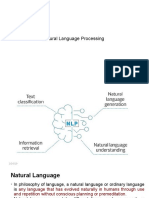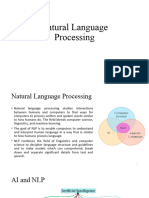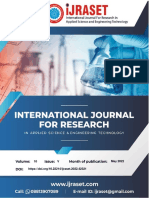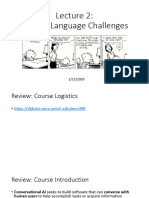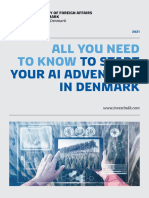0% found this document useful (0 votes)
31 views49 pagesIntroduction
The document provides an overview of natural language processing including why text is important, tasks in NLP like understanding and generation, and applications such as machine translation, question answering, and information extraction.
Uploaded by
saisuraj1510Copyright
© © All Rights Reserved
We take content rights seriously. If you suspect this is your content, claim it here.
Available Formats
Download as PDF, TXT or read online on Scribd
0% found this document useful (0 votes)
31 views49 pagesIntroduction
The document provides an overview of natural language processing including why text is important, tasks in NLP like understanding and generation, and applications such as machine translation, question answering, and information extraction.
Uploaded by
saisuraj1510Copyright
© © All Rights Reserved
We take content rights seriously. If you suspect this is your content, claim it here.
Available Formats
Download as PDF, TXT or read online on Scribd
/ 49


































